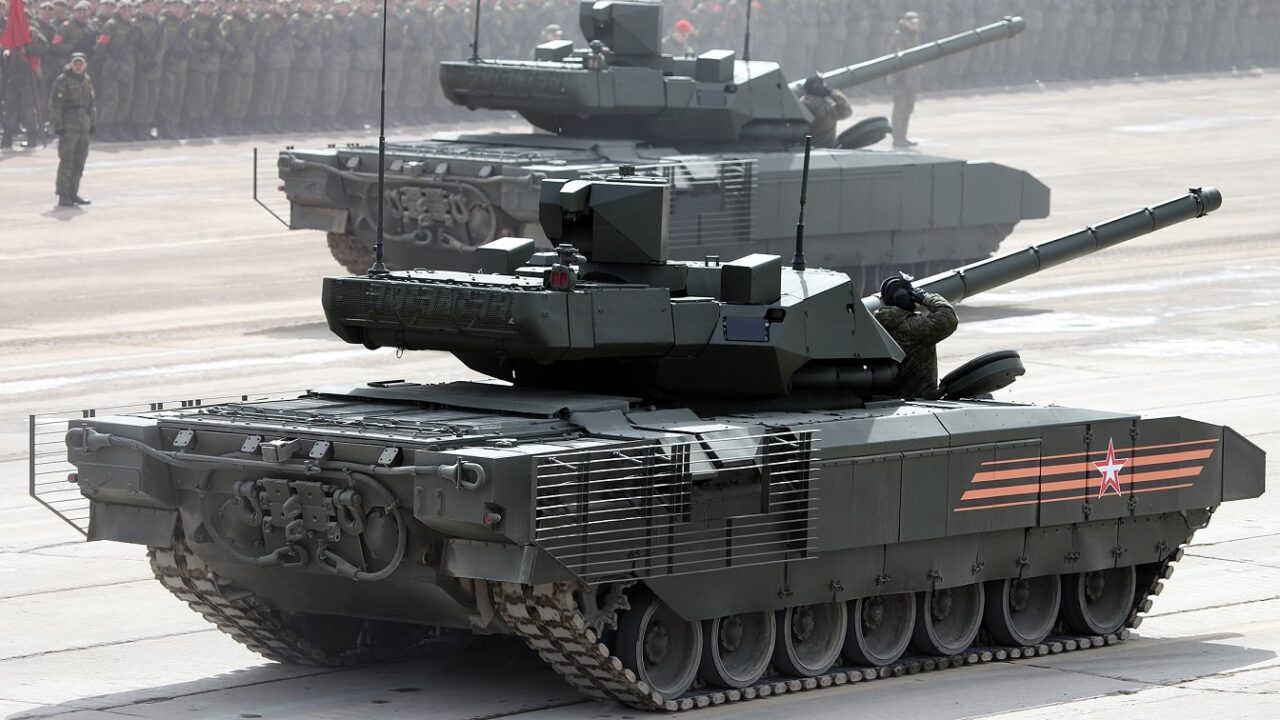Where Are Russia’s T-14 Armata Tanks? Seemingly Not in Ukraine – The Russian military’s seeming mighty T-14 “Armata” main battle tank (MBT) has long been touted as a potential game-changer for Moscow. Since first being displayed during the May 2015 Victory Day Parade in Moscow, the tank’s advanced capabilities have been praised.
However, the tank has been absent from the battlefield of Ukraine – possibly where it would be needed most.
Meet the T-14
Work on the Armata program began in 2010 when the Russian Ministry of Defence terminated work on its “Object-195” – the T-95 program – which was far less revolutionary and simply too evolutionary. Instead, the new Armata project was seen as a huge technological leap from Soviet-era military hardware designs. The Armata program was to be from the ground up very much distinct from past Soviet/Russian tank platforms.
The outline of the tank, from its hull to its long and boxy turret – which resembles Western tank turret designs – was a notable departure from past Soviet designs. The T-14 also featured seven road wheels, instead of the six wheels that were commonplace on almost all previous Cold War Soviet and even modern Russian MBTs.
Among its other innovative characteristics was its unmanned turret, which included a remotely controlled 125mm 2A82-1M smoothbore main gun with fully automated loading. The turret’s magazine could contain a total of 45 rounds of ammunition, whilst the main gun could also fire laser-guide missiles. In addition, the 2A82 125mm gun was designed to be upgraded to the 2A83 152mm gun, while the T-14 was also fitted with secondary weapons including a Kord 12.7mm machine gun or a PKTM 7.62mm machine gun.
The roof of the T-14’s turret also was developed to house a meteorological mast, satellite communications, global navigation satellite system (GLONASS), data-link and radio communications antennae.
Crew Safety
The Armata platform was also designed to keep its three-man crew protected. First, the T-14 MBT features a low-silhouette that reduces exposure to enemy fire, and that enhances the safety and survivability of the crew. Moreover, the driver, gunner and tank commander is housed in a crew compartment located in an armored capsule at the front portion of the hull, and isolated from the automatic loader as well as the ammunition storage in the center of the tank.
The crew compartment was also designed to be made from composite materials and protected by multilayer armor, which according to analyst reports can withstand a direct hit of nearly any type of round that currently exists including sub-caliber and cumulative rounds. The forward section of the tank was also developed to be covered with an active defense system that is designed to intercept anti-tank munitions including sub-caliber rounds such as those from anti-tank guided missiles, rockets and RPGs.
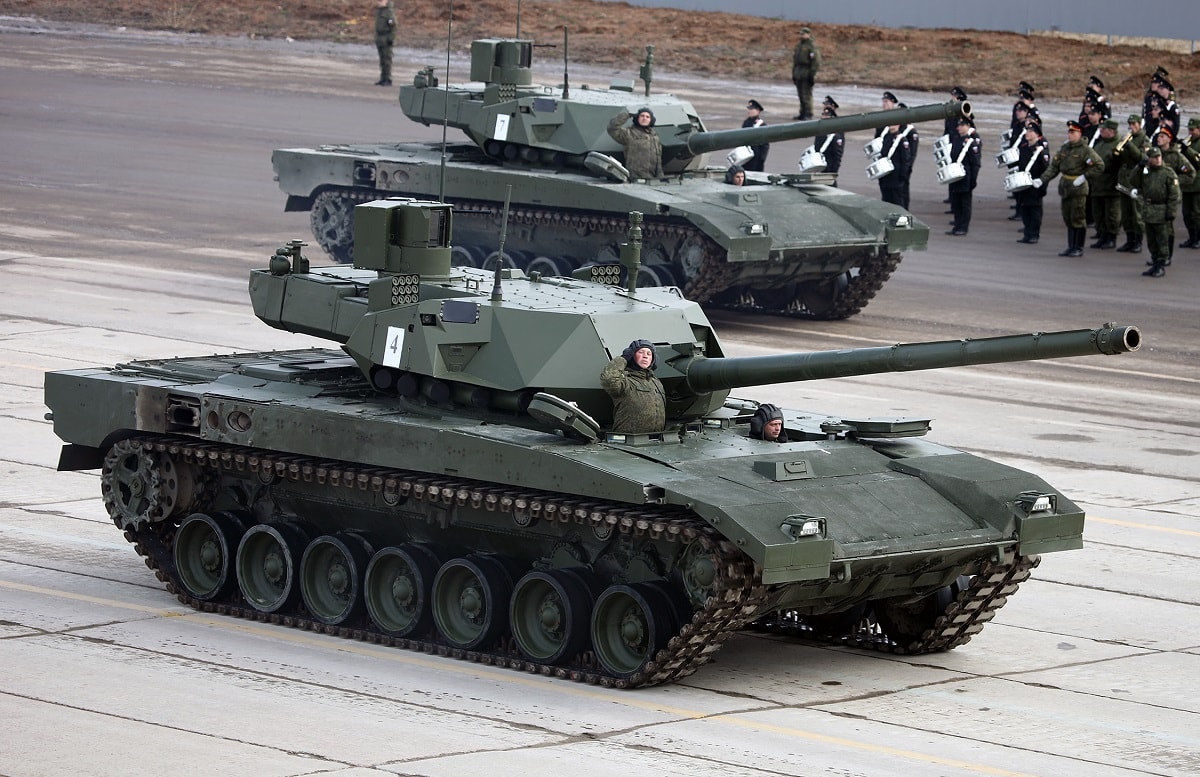
Image Credit: Vitaly V. Kuzmin
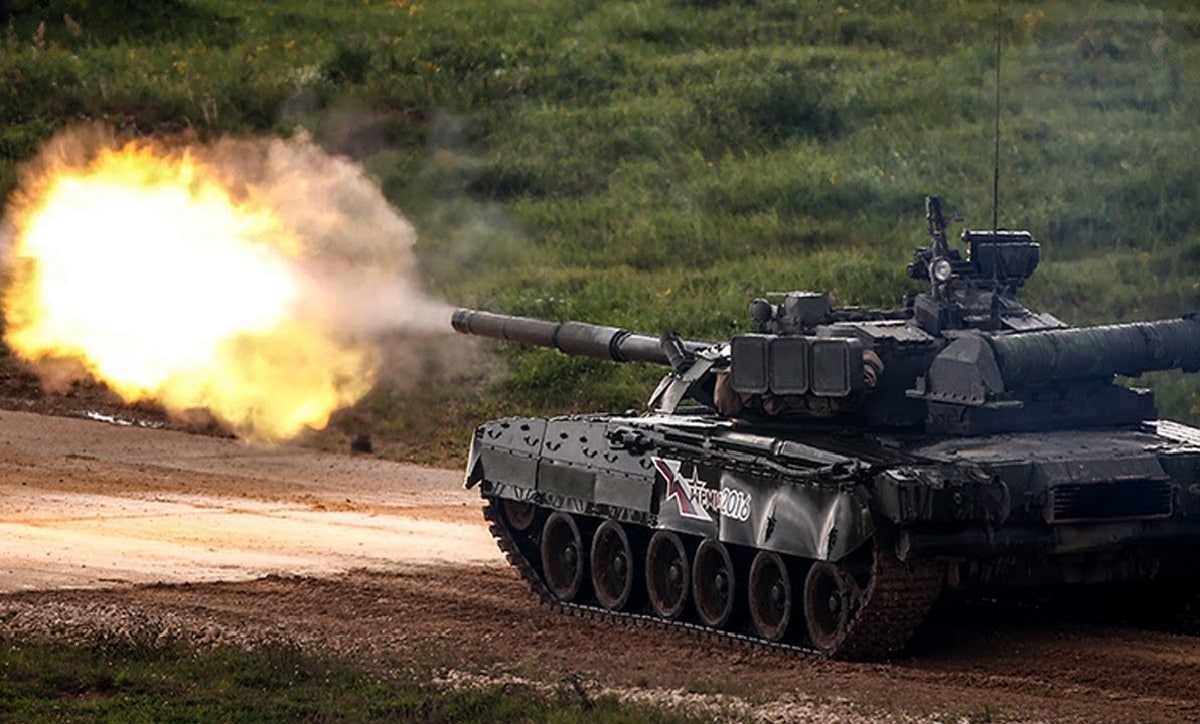
Image of Armata T-14 Tank. Image: YouTube Screenshot.
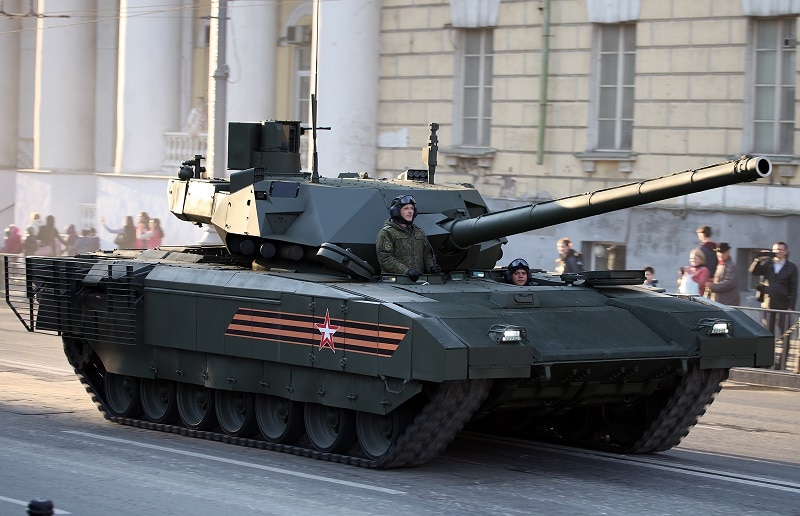
Armata Tank. Image via Creative Commons/Vitaly V. Kuzmin
The result is that the T-14 is reported to offer up to STANAG 4569 Level 5 protection. The front hemisphere of the tank was developed to utilize reactive armor while the rear was fitted with bar armor that provides additional protection from anti-tank weapons such as an RPG.
Crew comforts have always been “lacking” in an armored vehicle, but the T-14 was designed with an internal toilet so the crew doesn’t need to exit the tank to answer “nature’s call.”
Not in Ukraine
The T-14 may not be in Ukraine, simply because Moscow doesn’t have enough to actually send. As previously reported, Russian tank manufacturer Uralvagonzavod first said the T-14 would be delivered in 2018. Then the distribution of the first nine tanks would come in 2019. After this date came and went, the leadership said 20 would be tested and 80 would be ready by the end of 2021.
Moscow had announced last year that the T-15 Armata would enter serial production this year, but it seems that the new cutting-edge MBTs wont’ be ready until after next year at the very earliest.
Would Russia Use Them?
It is easy to see why the T-14s aren’t in Ukraine.
Russia simply doesn’t have the numbers to use them effectively. There is little reason to deploy the few T-14s, which are faster and more capable than the older tanks now fielded in Ukraine. If anything, deploying the most advanced weapons alongside the rest of their antiquated tanks would only put the T-14s in harm’s way.
But another consideration is that Russia can’t afford to lose any.
Moscow may not have expected much resistance in Ukraine, and therefore it had little reason to risk its shinny new toys in its “special military operation.” That may be for the best for Russian Federation President Vladimir Putin, as each T-14 reportedly costs in excessive of $3.7 million, roughly 20 times the price of a U.S.-made Javelin anti-tank rocket, which comes in at around $175,000.
The Ukrainians have proven to be using the Javelin and British-made NLAWs to great success.
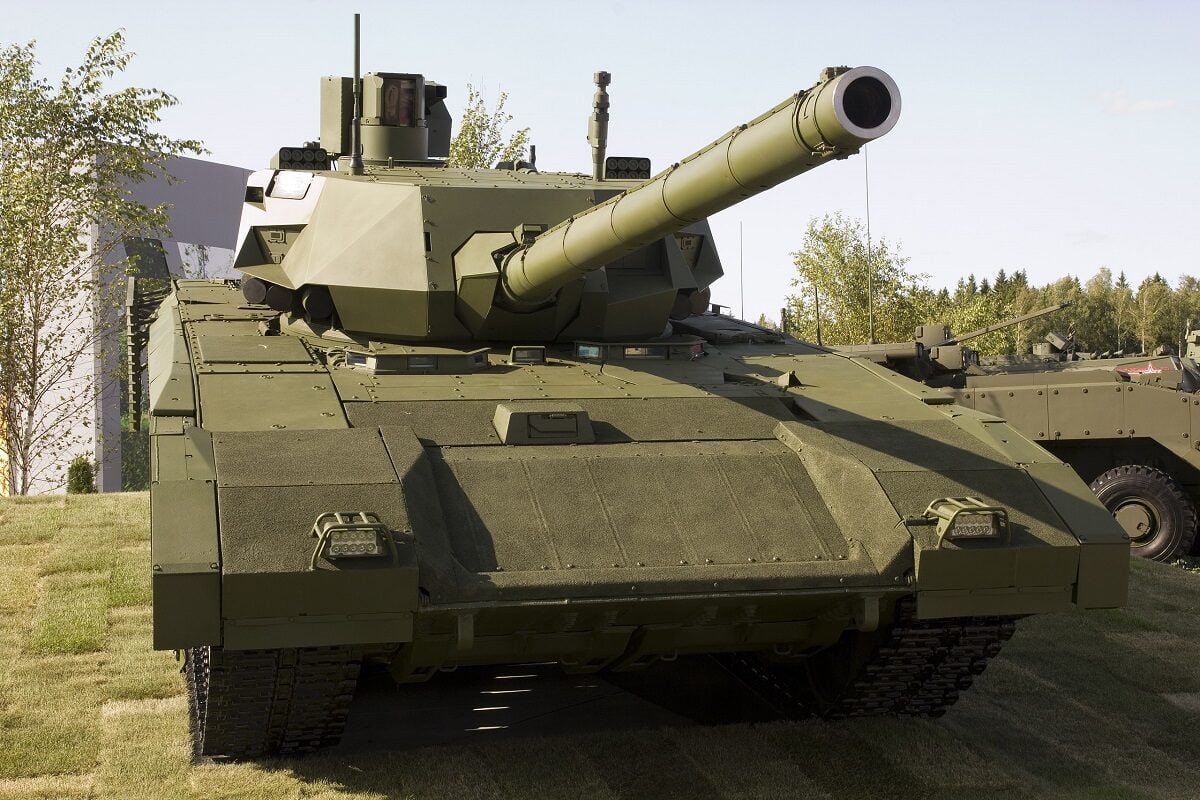
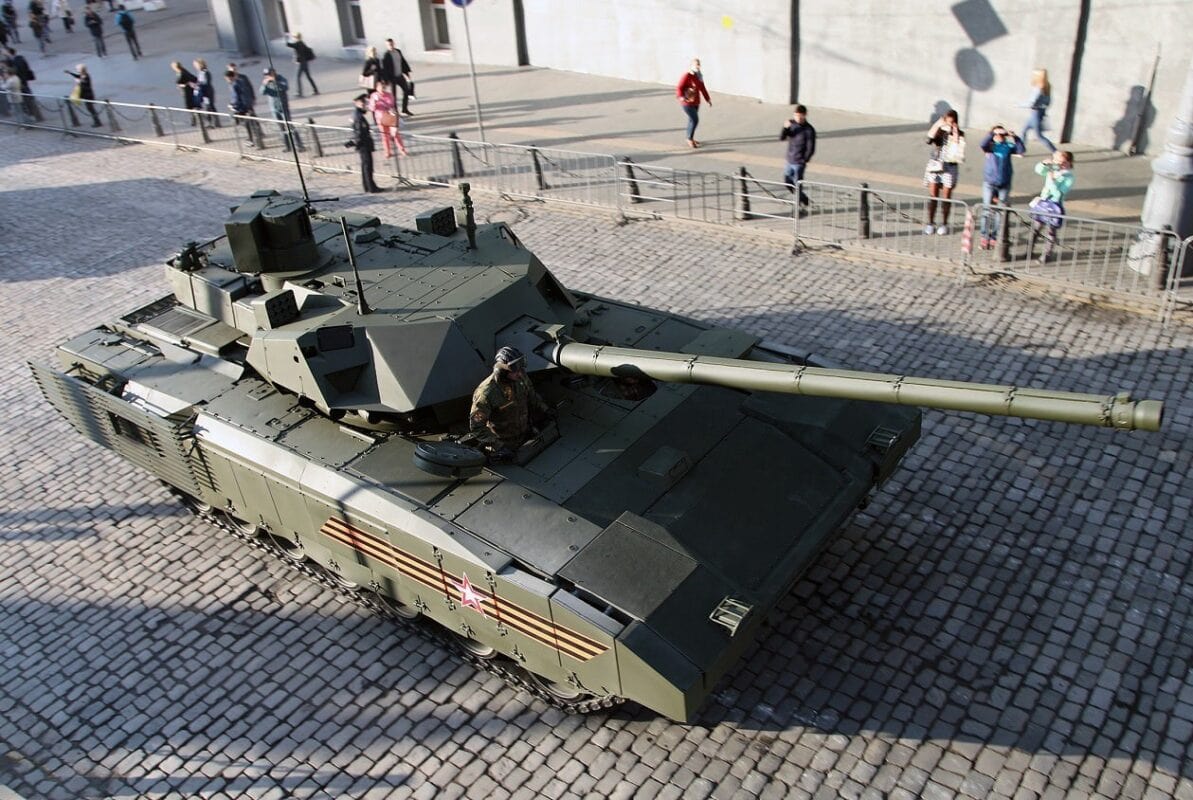
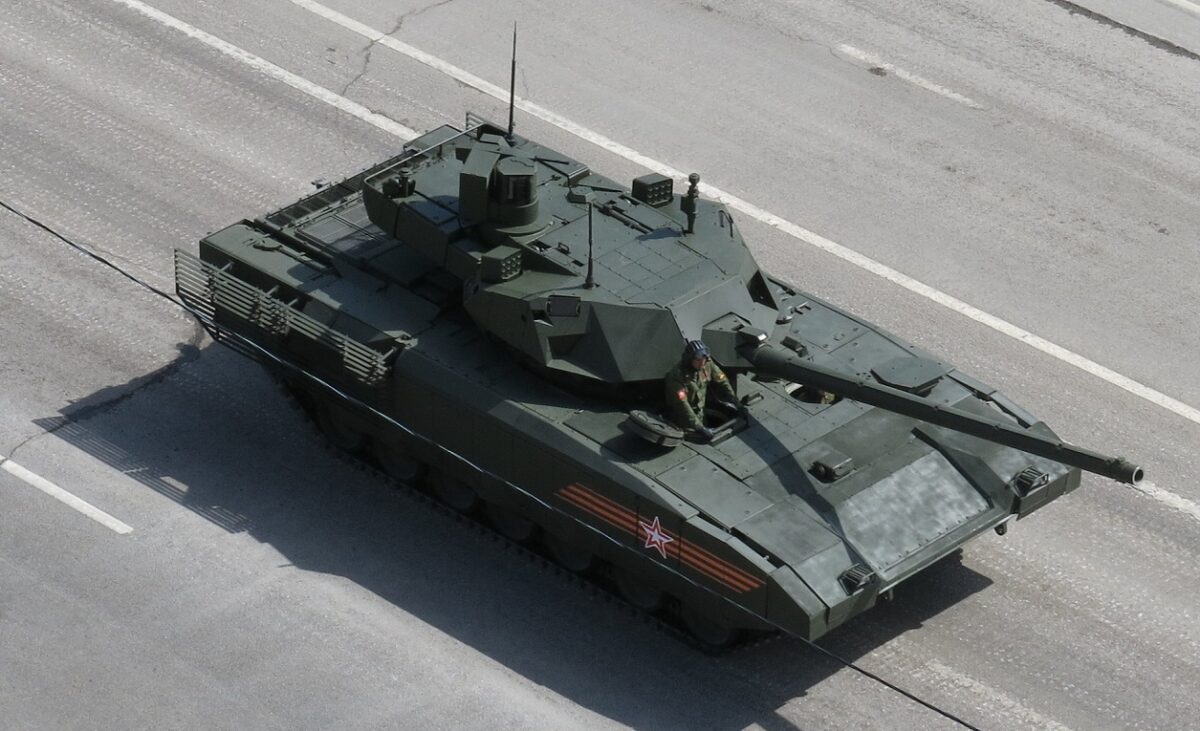
Prototype of Russian main battle tank T-14 Armata, view from above, Victory parade Moscow 2015.
Already, the financial loss to Russia, which is facing economic hardship due to the crushing sanctions, could be far greater than the physical damage to Ukraine. Simply put, Russia can’t afford to lose this war, but if it manages to achieve its goals it could still be a Pyrrhic victory.
With that in mind, deploying the T-14 isn’t worth the risk in money, but it certainly wouldn’t be worth the risk in reputation for the largely unproven tank either.
When one was reportedly destroyed in Syria, western media jumped on the story to report it. By not deploying the T-14, it remains a mystery; a potentially powerful weapon the west should fear. If the Ukrainians destroyed even one or two it would make for a significant photo-op. The Kremlin may be simply making sure that doesn’t happen.
Now a Senior Editor for 1945, Peter Suciu is a Michigan-based writer who has contributed to more than four dozen magazines, newspapers and websites. He regularly writes about military hardware, and is the author of several books on military headgear including A Gallery of Military Headdress, which is available on Amazon.com. Peter is also a Contributing Writer for Forbes.

